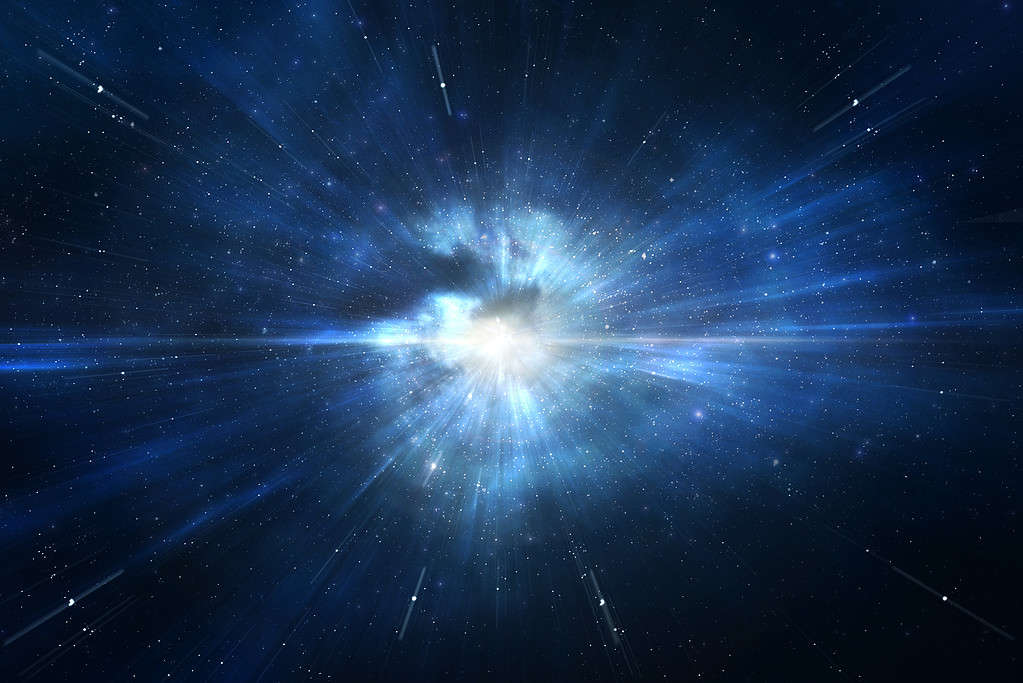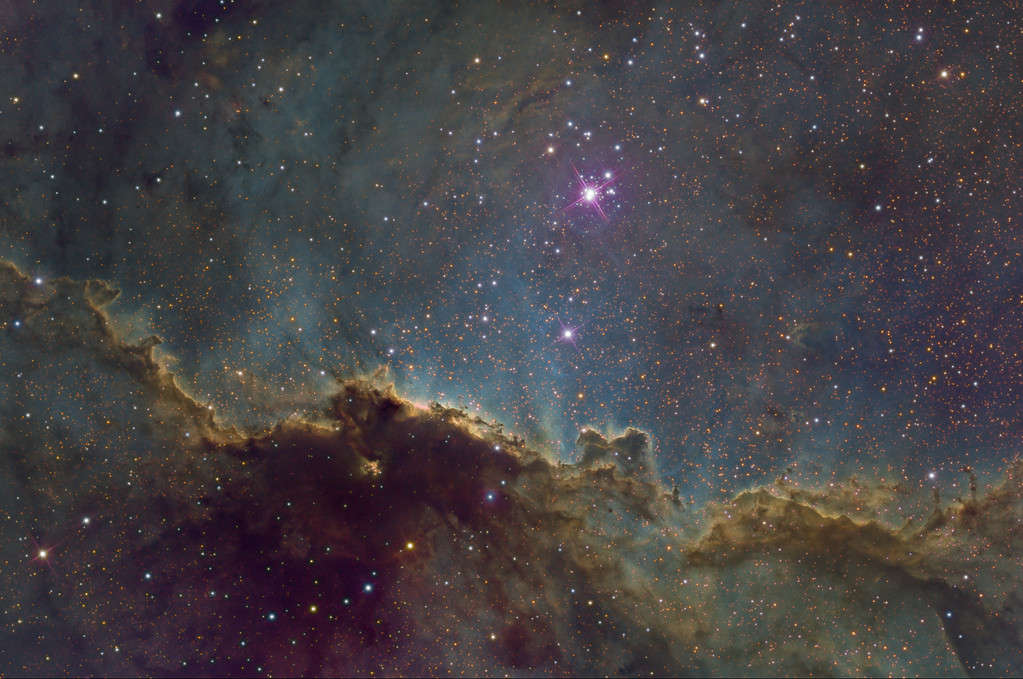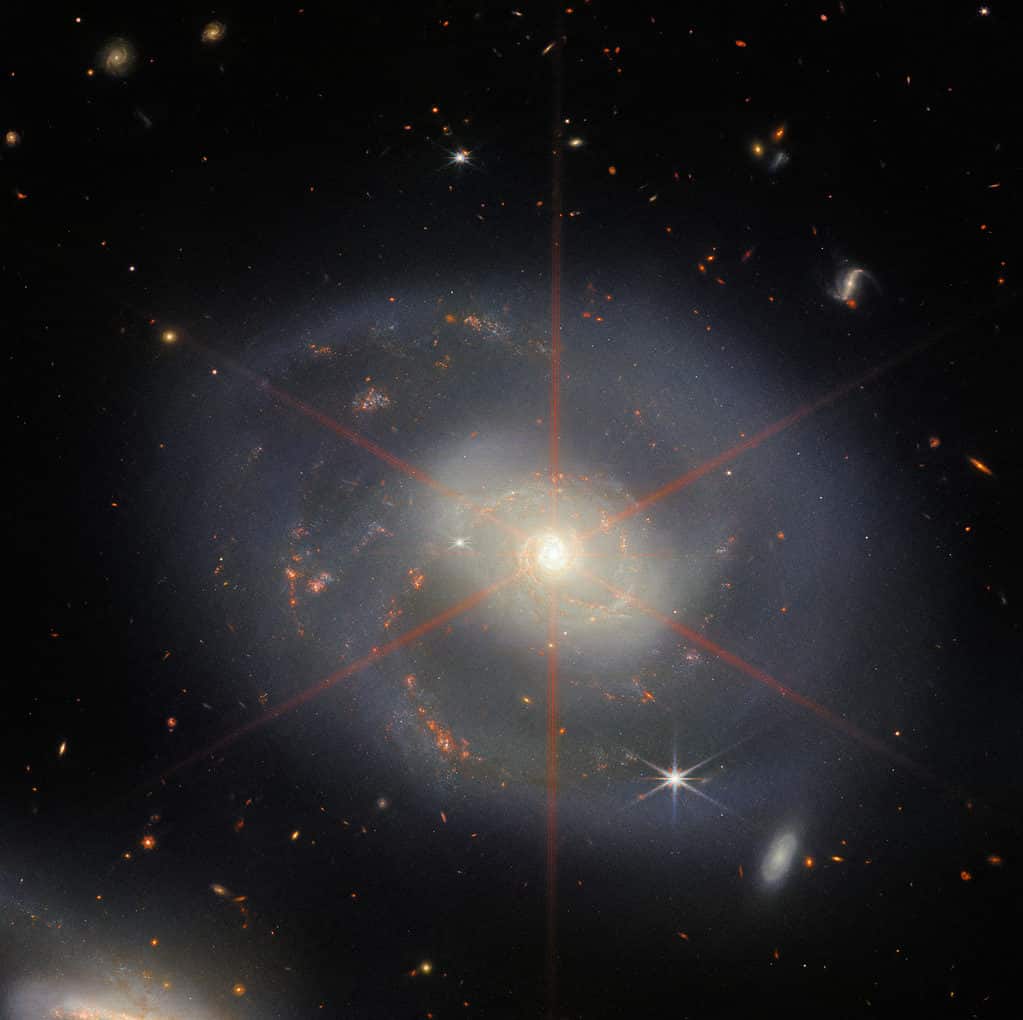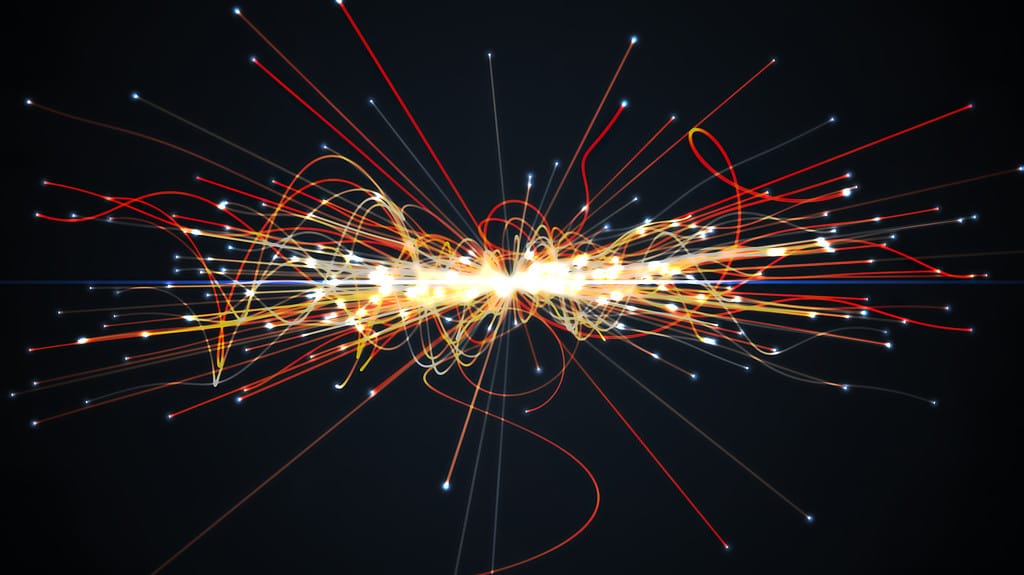What holds our universe together? What caused the creation of our universe? The field of study known as cosmology attempts to study and answer questions such as these. Some believe that one day, experts in this field of study may actually find some answers to questions around human spirituality, such as the “why” or “how” behind our existence. The study of cosmology has already started to answer essential questions about the origins of the universe and how life as we know it came to be. Dark matter may hold more answers to these questions.
Dark Matter: The Expanding Universe

The big bang is a scientific theory that describes the creation of our universe.
©pixelparticle/iStock via Getty Images
Scientists still don’t know exactly what dark matter is. However, many theorize that it is there, and many have differing theories about what it is and its purpose. How do we know it is there? We must go back to the “cosmogenesis” or, the origins of the universe.
As we humans observe the universe, we have begun to discover some surprising things. While some have posited that the universe is expanding in some way, this was only confirmed as a scientific fact in 1929 by Edwin Hubble, the namesake of the Hubble Telescope. As technologies improved, scientists have been able to determine a more precise estimate of the rate of expansion of the universe, which also gives us information about the precise age of the universe.
Scientists theorize that the universe is expanding because it started as a “big bang.” This was an explosion of some sort, from which we are still reeling. The explosion that somehow created all matter also sent this matter moving away from it. The exact nature of what caused the Big Bang, also known as the Cambrian explosion, is still unknown, but scientists have several theories.
Because of the speed of light, we don’t actually see the universe as it is today. The furthest reaches of the universe that we can see here on Earth are actually old light, from the first moments of the universe. By studying these further stars, scientists can track the rate of expansion of the universe. Earlier, scientists hypothesized that the forces of gravity within the universe would cause the rate of expansion of the universe to slow over time. However, in the 1990s, they discovered the opposite is true. The expansion is actually accelerating as time goes on.
Dark Matter: Invisible Matter

Only a small percentage of the universe’s mass is known and visible to us.
©Dhaval Brahmbhatt/iStock via Getty Images
A better name for dark matter might be “invisible matter.” It’s not like a dark cloud that you can see. It describes part of what we see when we are looking at “empty” space. In physics, normal, tangible matter is called baryonic matter. This matter is made of protons and neutrons. Even some things that seem intangible are made of baryonic matter such as clouds, steam, and air particles. Many things in space are baryonic like stars and even black holes. If you can perceive it, chances are it is baryonic.
We can see baryonic matter because it reflects (or absorbs and then emits) types of electromagnetic radiation, such as light. So, most of the ways we have for detecting any type of matter, even tiny particles, involve electromagnetic radiation. Dark matter nearly does not interact with electromagnetic at all. It may do so very weakly.
Dark Matter: How We Know It Is There

The way stars in spiral galaxies move has provided more information about dark matter.
©ESA/Webb, NASA & CSA, L. Armus, A. S. Evans, CC BY 4.0, via Wikimedia Commons – License
If we can’t see dark matter, how do we even know it is there? It does not reflect or absorb light, but it does interact with gravity. In 1933, the “father of dark matter,” astronomer Fritz Zwicky, discovered a galaxy cluster with unique properties. He observed that based on theories and formulae of gravity, the individual galaxies within the cluster were moving too quickly to be under the influence of only gravity. There had to be something else at play.
In the 1970s, another astronomer, Vera Rubin, also saw something odd. She noticed that the stars towards the outside of spiral galaxies were traveling at the same speed as the stars towards the center. If gravity was the only force at play here, the outer stars of the spiral galaxy should have slowed down compared to those at the center. Based on her observations of the forces at play, she determined that the matter we can see in galaxies is representative of just about 10% of their mass. So, what is the other 90%? It is dark matter.
Now, scientists believe that the observable amount of mass of the universe is actually less than 10%. According to NASA, the universe is comprised of:
- 5% normal matter
- 27% dark matter
- 68% dark energy
According to this scientific theory, the majority of our universe is made up of energy and matter that we can’t see and don’t know exactly what it is.
Dark Matter and Dark Energy
Scientists propose that nearly 70% of the universe is dark energy. This is an unknown and theoretical force that explains why and how the universe is expanding in ways that our normal laws of physics would not predict. Dark energy is also only a property of space. There are many different theories about dark energy.
Einstein’s Cosmological Constant
Einstein’s theory is that dark energy is a self-generating force that allows space to create more space. He theorized that dark energy does not get “watered down” as space expands. It creates more of itself as it also creates more space, leading to the acceleration of the expansion of the universe. According to this theory, there is a constant rate of expansion of dark energy that doesn’t change over time and is also the same in each unit of space.
One problem with this theory is that according to scientists at CERN, mathematically, the result of this would be that the universe is expanding so fast that galaxies and stars would not have the chance to form. But we can observe that is definitely not the case.
The Theory of Quintessence
The name quintessence means “fifth element.” There are a few theories of quintessence. The main way quintessence differs from a cosmological constant is that it posits that the rate of dark energy in the universe changes slowly over time. It also theorizes that different areas of space can have different levels of dark energy. Some scientists believe this is a more plausible theory than the cosmological constant that allows for the formation of what we know to exist in the universe.
A New Theory of Gravity
Other scientists believe that dark matter is not necessarily anything new. They believe that it’s simply gravity behaving differently than what we have observed so far. The trouble with this theory is that the theory of gravity does accurately explain many observable things on Earth and closer to home in our solar system. So, a new theory of gravity might negate these things which we already know to be true.
What Does Dark Matter Do?
Scientists theorize that dark matter is part of what holds the universe together. It may be what keeps galaxy clusters together. Some believe it is actually dark matter that creates the properties of gravity that we know about and can observe. Some scientists visualize it as a kind of network or web connecting planets, stars, and galaxies. Visualizations of dark matter often resemble the nervous system of the human body with its nerves connecting all the essential parts of the body.
Dark Matter vs. Antimatter

This rendering shows what it might look like when matter and antimatter collide in a hadron collider.
©vchal/iStock via Getty Images
While they may seem to be related by title, dark matter and antimatter are quite different. Antimatter is normal matter, but with the opposite charge, electrically speaking. With so much matter around, you might assume there is just as much antimatter. But it’s actually quite rare. Humans have created both antihydrogen and antihelium using the Large Hadron Collider at CERN in Switzerland.
Scientists believe one reason it is so rare is because when antimatter meets its partner, matter, both particles are destroyed, releasing energy in the process. Because there is much more matter than antimatter in our universe, antimatter doesn’t stand much of a chance.
Some scientists theorize that antimatter may have been behind the Big Bang. They hypothesize that perhaps before the Big Bang, there were equal amounts of matter and antimatter that kept essentially canceling each other out. Then, some kind of imbalance happened, causing a huge explosion, and matter took over.
How do we know that antimatter is not dark matter? When matter and antimatter collide, the destruction creates gamma rays. Scientists have not observed this phenomenon with dark matter.
So, What Is Dark Matter?
Scientists don’t all agree on what dark matter is, exactly. But most do agree that we know more about what it isn’t. There are some theories about what it may be.
MACHOS: Massive Astrophysical Compact Halo Objects
One idea is that dark matter is a special type of object that does not emit radiation and floats in space. These objects are not attached to any particular bodies and are hard to see or detect with scientific equipment. However, because of the way that scientists hypothesize dark matter functions, some believe it is unlikely to be made of MACHOS. A MACHO was first observed in 2001.
WIMPS: Weakly Interactive Massive Particles
These theoretical particles are invisible to electromagnetic detection and move very slowly. They would also have a very high mass. Many scientists believe this idea to be the most likely candidate. There’s only one problem: WIMPs have never been found or observed, despite many attempts.
There have been many experiments devised to observe dark matter to learn more about it, but thus far, they have yielded no results. In the science community, even these “unsuccessful” attempts are considered a win because they give us more information about dark matter as a whole, even if we only know more about what it is not than what it is.
The photo featured at the top of this post is © Dhaval Brahmbhatt/iStock via Getty Images
Thank you for reading! Have some feedback for us? Contact the AZ Animals editorial team.







